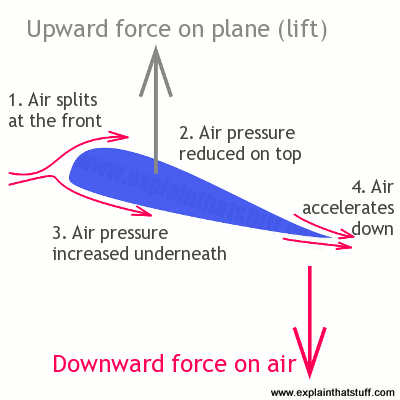It is wonderful to learn about the discoveries of modern science and how the imagination and creativity of people can invent amazing creations. When I see people flying large airplanes and learn about all the things they can do I am filled with a sense of wonder. The history and science behind the creation of airplanes is fascinating, and I love to learn how the engine, wing, and air pressure all play a role in making planes work.
The Wright Brothers
Orville and Wilbur Wright are important figures in the history of aviation. Inspired by the work of Leonardo da Vinci and sketches he did during his lifetime, the Wright brothers were able to build the first working aircraft that flew through the sky.

source
How Planes Work
There are several important factors to take into account when examining how planes work: lift, drag, gravity, and thrust. Wind flows over the wings of the plane while gravity pulls the plane downward. The propellers of the plane help to thrust the plane forward to go against air blowing against the plane creating drag. The thrust of a plane must be stronger than the forces causing drag to help the plane get in the air. Airplane wings are shaped to help encourage lift. Low air pressure flows over the top of the wings while a higher pressure flows under them. This difference in pressure helps to lift the wings upward.
The plane's engines are important because they move the plane forward at a high enough speed that it causes air to flow around the plane. The fast speed of air flow over the wings of the plane help to lift upwards into the sky. The engines make it go forward and the wings help the plane to go up against gravity and into the sky.

source
Air pressure
Bernoulli's principle states that an increase in the speed of a fluid occurs simultaneously with a decrease in pressure or a decrease in the fluid's potential energy.
Basically, Bernoulli's principle when examining plane function means that there is higher air pressure below a plane's wing than exists above the wing and that is what causes the wings to lift the plane into the sky.
The picture below is an example of Bernoulli's principle

source
Air planes don't need engines to fly and paper airplanes are a great example of this principal. Paper planes can generate air flow to create lift to fly. The Wright brothers showed this with their first successful flying plane. Their wings were flat with a slight tilt. Having a bit of an angle on the wings is very important in helping the device get airborne to help generate proper air flow to cause lift.
See the picture below for an example. When wind goes straight down the wings, the wings are curved a bit upwards to increase the speed of the air. According to Bernoulli's principle there will be less air pressure.
Not all aircraft work this way and helicopters are a good example. Helicopter blades cause something called downwash. This is when drafts move downward. This downwash combined with the weight of the helicopter helps it to balance and be stable in the air. The blades of a helicopter spin in a circle helping to lift it into the air. Airplanes also cause downwash but helicopters create it in a way that is much more noticeable. Ok,it is time to over ,let me know if you have any question.


Hi! I am a robot. I just upvoted you! I found similar content that readers might be interested in:
https://steemit.com/steemiteducation/@masudrana/how-the-plane-fly-in-the-sky